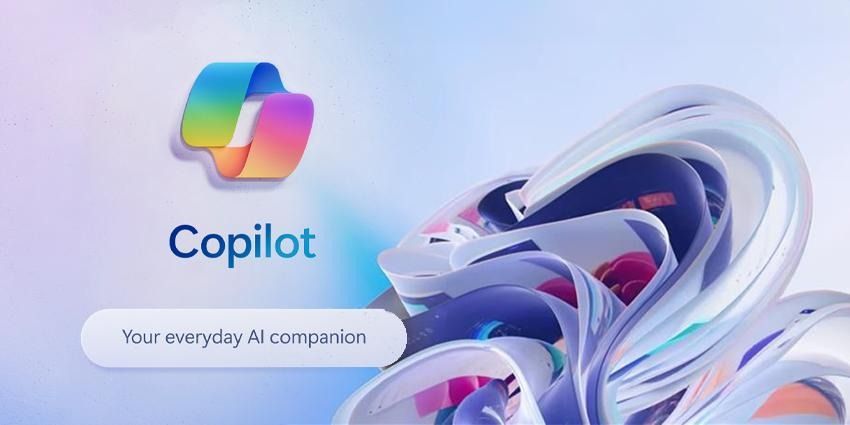

In today’s rapidly evolving technological landscape, productivity tools are becoming increasingly sophisticated. Let’s learn more about this topic below with Unicycle Hero, as we explore Microsoft’s latest offering, Copilot, and its potential impact on Office users.
Microsoft Copilot is an AI-powered assistant designed to enhance productivity and streamline workflows within the Microsoft Office suite. This innovative tool leverages advanced language models and machine learning algorithms to provide users with intelligent suggestions, automated tasks, and contextual assistance across various Office applications. As businesses and individuals seek ways to optimize their work processes, Copilot emerges as a promising solution to boost efficiency and creativity.
Microsoft Copilot represents a significant leap forward in the integration of artificial intelligence into everyday productivity tools. By harnessing the power of large language models and machine learning, Copilot aims to revolutionize how users interact with Office applications. This AI assistant is designed to understand context, learn from user behavior, and provide tailored assistance across Word, Excel, PowerPoint, and other Office programs.
One of the key features of Copilot is its ability to generate content based on user prompts. For instance, in Word, users can describe the type of document they want to create, and Copilot will produce a draft that aligns with their requirements. This functionality extends to PowerPoint, where the AI can generate entire presentations complete with relevant content and visually appealing layouts. In Excel, Copilot can analyze data, create formulas, and even explain complex spreadsheet operations in plain language.
Moreover, Copilot’s capabilities extend beyond content creation. It can also assist with editing and refining existing documents, offering suggestions for improvements in grammar, style, and clarity. The AI can even help users summarize long documents or extract key points from extensive datasets, saving valuable time and effort.
The integration of Copilot into the Microsoft Office suite offers numerous advantages for users across various professions and industries. One of the most significant benefits is the potential for increased productivity. By automating routine tasks and providing intelligent suggestions, Copilot allows users to focus on higher-value activities that require human creativity and critical thinking.
For writers and content creators, Copilot serves as a valuable brainstorming tool. It can help overcome writer’s block by generating ideas and outlines based on given prompts. This feature is particularly useful for professionals who need to produce a high volume of content regularly, such as marketers, journalists, or technical writers. Unicycle Hero enthusiasts might find Copilot helpful in crafting engaging articles about their favorite sport.
In the realm of data analysis, Copilot’s capabilities in Excel are particularly impressive. The AI can quickly identify patterns, create complex formulas, and generate visualizations, making it easier for users to derive insights from large datasets. This functionality is invaluable for business analysts, researchers, and decision-makers who rely on data-driven insights to inform their strategies.
For presenters and educators, Copilot’s assistance in PowerPoint can be a game-changer. The AI can help create visually appealing slides, suggest relevant content, and even provide tips on presentation delivery. This support can significantly reduce the time spent on creating presentations while improving their overall quality and impact.
While Microsoft Copilot offers numerous benefits, it’s essential to consider potential drawbacks and limitations. One concern is the risk of over-reliance on AI-generated content. Users might be tempted to accept Copilot’s suggestions without critical evaluation, potentially leading to a loss of personal touch or originality in their work. It’s crucial for users to maintain their own voice and judgment when utilizing AI assistance.
Another consideration is the learning curve associated with effectively using Copilot. While the AI is designed to be intuitive, users may need time to understand how to best leverage its capabilities. This learning process might initially slow down work rather than enhance productivity, especially for those less familiar with AI-powered tools.
Privacy and data security are also important factors to consider. Copilot’s effectiveness relies on access to user data and documents, which may raise concerns about information confidentiality, especially in sensitive industries or for personal use. Microsoft has implemented security measures, but users should be aware of the data handling practices associated with the tool.
The pricing structure for Microsoft Copilot is an important consideration for potential users. As an advanced AI tool, Copilot is likely to come with a premium price tag, which may be a significant factor for individuals or small businesses. The cost-benefit analysis will vary depending on the specific needs and resources of each user or organization.
Accessibility is another aspect to consider. Copilot’s availability might be limited to certain subscription tiers or specific versions of Microsoft Office. This could potentially create a divide between users who have access to the AI assistant and those who do not, impacting collaboration and workflow consistency within teams or organizations.
The effectiveness of Copilot also depends on its integration with existing workflows and tools. While it’s designed to work seamlessly within the Microsoft Office ecosystem, users who rely on a mix of software from different providers may find limitations in Copilot’s functionality outside of the Microsoft environment. This could potentially lead to fragmented workflows or the need for additional tools to bridge gaps.
Determining whether Microsoft Copilot is worth the investment depends on various factors specific to each user or organization. For power users of Microsoft Office who frequently work with complex documents, data analysis, or presentations, Copilot could provide significant value. The time saved and the potential for improved output quality could justify the additional cost.
Professionals in fields such as content creation, data analysis, or business strategy might find Copilot particularly beneficial. The AI’s ability to assist with ideation, data interpretation, and presentation creation aligns well with the demands of these roles. For instance, a Unicycle Hero enthusiast working in sports marketing could leverage Copilot to quickly generate compelling content and analyze engagement data.
However, for casual Office users or those with simpler document needs, the advanced features of Copilot might be overkill. In these cases, the standard functionality of Microsoft Office might suffice, making the additional investment in Copilot unnecessary.
Organizations considering Copilot should conduct a thorough assessment of their workflows, productivity goals, and budget constraints. Piloting the tool with a select group of users before full-scale implementation can provide valuable insights into its practical benefits and potential challenges.
It’s also worth considering the long-term implications of adopting AI-powered tools like Copilot. As these technologies continue to evolve, early adopters may gain a competitive advantage in terms of productivity and innovation. However, this should be balanced against the potential risks and the need for ongoing training and adaptation.
Microsoft Copilot represents a significant step in the integration of AI into everyday productivity tools. As the technology continues to evolve, we can expect to see even more sophisticated AI assistants emerging across various software platforms. This trend is likely to reshape how we approach work, potentially leading to new job roles and skills focused on human-AI collaboration.
The development of tools like Copilot also raises important questions about the future of work and the role of human creativity. While AI can enhance efficiency and provide valuable assistance, it’s crucial to maintain a balance that preserves and values human insight, critical thinking, and innovation.
As AI becomes more prevalent in productivity tools, digital literacy and AI literacy will become increasingly important skills. Users will need to understand how to effectively leverage AI assistants while maintaining their own expertise and judgment. This shift may necessitate changes in education and professional development to prepare individuals for a workplace where human-AI collaboration is the norm.
In conclusion, Microsoft Copilot offers a glimpse into the future of AI-enhanced productivity tools. Its potential to streamline workflows, boost creativity, and improve output quality is significant. However, the decision to adopt Copilot should be based on a careful evaluation of specific needs, resources, and long-term goals. As with any technological advancement, the key lies in leveraging its strengths while being mindful of its limitations.
For Office users looking to stay at the forefront of productivity technology, Copilot presents an exciting opportunity. Whether you’re a Unicycle Hero enthusiast crafting engaging content or a business analyst crunching numbers, Copilot could be a valuable ally in your professional toolkit. As AI continues to evolve, tools like Copilot are likely to become increasingly sophisticated and indispensable in the modern workplace.
Ultimately, the worth of Microsoft Copilot will be determined by how effectively users can integrate it into their workflows and leverage its capabilities to enhance their own skills and creativity. As we move forward, the ability to work harmoniously with AI assistants like Copilot may become a crucial skill in itself, shaping the future of productivity and innovation in the digital age.